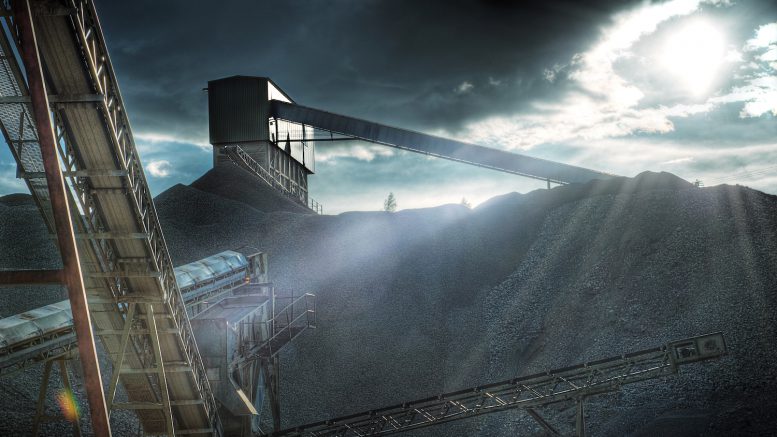As one of the world’s largest commercial and industrial property insurers, FM offers a market specialty in safeguarding large mining businesses by bringing core technical knowledge around protection and risk mitigation. The company insures over 300 mine sites worldwide.
Founded in 1835, FM has nearly two centuries of experience protecting its clients’ businesses, backed by in-house science and engineering expertise. FM conducts research on a variety of areas of insurance expertise, including how to protect conveyor belts against exposure in underground mines.
“About five years ago, we decided it was time to revisit the existing conveyor belt research that we had done,” explains Jon Nelson, FM’s Principal Engineer, Mining and Molten Materials. “We did some more modern fire tests and constructed a full conveyor galley in our research facility.”
The company now has nearly 200 engineers in its Mining and Molten Material program who are specifically trained to support these industries to ensure standards are in place for current and future hazards.
Deep expertise
FM has developed deep expertise on conveyor incidents, and the company has a comprehensive understanding of the risks conveyors can pose if the correct precautions are not taken.
“As a mutual company, we’re actually partners with our clients in protecting their purpose,” says Nelson. “They have entrusted us to deliver comprehensive risk assessments, develop robust property insurance plans, and foster engineering-based solutions that help protect them against fire, natural disasters and equipment breakdowns.”
Conveyors are present on virtually every mining site – and are often the only pathway for ore transport. Although integral to the smooth operation of mines, they are also a hazard that carries significant risk, especially for fire.
“When we look at mining sites, we see a lot of big, complex pieces of equipment – but at the end of the day, mining is a gravity-driven process,” says Nelson.
“Everything we do revolves around moving the material to the top of our process and letting it filter through. The conveyor is a critical piece of equipment for that. It’s the only way we must get our material to the top of the process so that it can flow through and be processed so that we can turn those rocks into revenue.”
Significant threat
Conveyor belt fires are a significant threat because they can cause substantial operational downtime. Conveyors are critical for transporting ore, and a fire can halt production for months.
“One thing that’s often missed when people think about conveyor fires is they don’t realize that often when a conveyor fire occurs, it’s not just a replacement of the belt,” Nelson says.
“It actually leads to a complete collapse of the whole conveyor galley, which then requires complete reconstruction before you can return to operation.”
Depending on a mining company’s contingency plans, Nelson says for most mining operations, there is a conveyor belt somewhere on their site that represents a single point of failure that will take operations down completely for a period of time long enough to affect a mining company’s production guidance for months.
“For large miners, the financial implications of a 100% shutdown for a few months can translate to losses in the hundreds of millions of dollars.”
Fire protection
Proactively installing automatic fire protection is a business imperative, Nelson points out. Positioning fire protection, particularly automatic sprinkler systems, as a critical investment protects revenue and minimizes downtime.
“Another misunderstanding about conveyor belt fires is that the ore on the belt doesn’t actually matter. The loss history is the same for belts carrying combustible ore, like coal, or noncombustible ore, like iron ore.”
Even if the ore isn’t combustible, the actual hazard is the rubber belt itself – that’s critical from a fire perspective, Nelson says
Fire protection systems should be designed appropriately for the climate that they’re in, he says. In colder climates there is risk of water freezing in the sprinkler pipes.
FM Engineers specialize in recommending fire protection systems to avoid that icing hazard, designing systems that are dry, meaning that the pipes are full of air, so they don’t activate and fill with water unless a fire occurs. This is a key design component that is crucial to avoid blocked pipe systems in cold northern winters.
“Contingency planning is crucial. You have to look at the risk of the actual conveyor to determine what the right contingency plan is going to be for you,” Nelson points out.
Proactive approach
Without fire protection in place, an enclosed conveyor is likely to collapse, damaging rollers and drives and other key machinery components.
“Collapse of a conveyor galley after a fire can take three to four months to repair,” Nelson emphasizes, adding that the downtime after a fire, with proper fire protection in place, is typically four to eight hours.
“What we have seen over the years is that when we have sprinklers on the conveyor, that we effectively have no damage to the conveyor galley itself and we just have to replace a little bit of belt and some bearings. It’s very successful.”
More about FM’s comprehensive analysis of conveyor belt fire risks and its approach to innovative solutions, such as optimized sprinkler systems, are here.
The preceding Joint Venture Article is PROMOTED CONTENT sponsored by FM and produced in co-operation with The Northern Miner. Visit: www.fm.com/mining for more information.


Be the first to comment on "JV article: How FM defuses one of mining’s most missed risks"